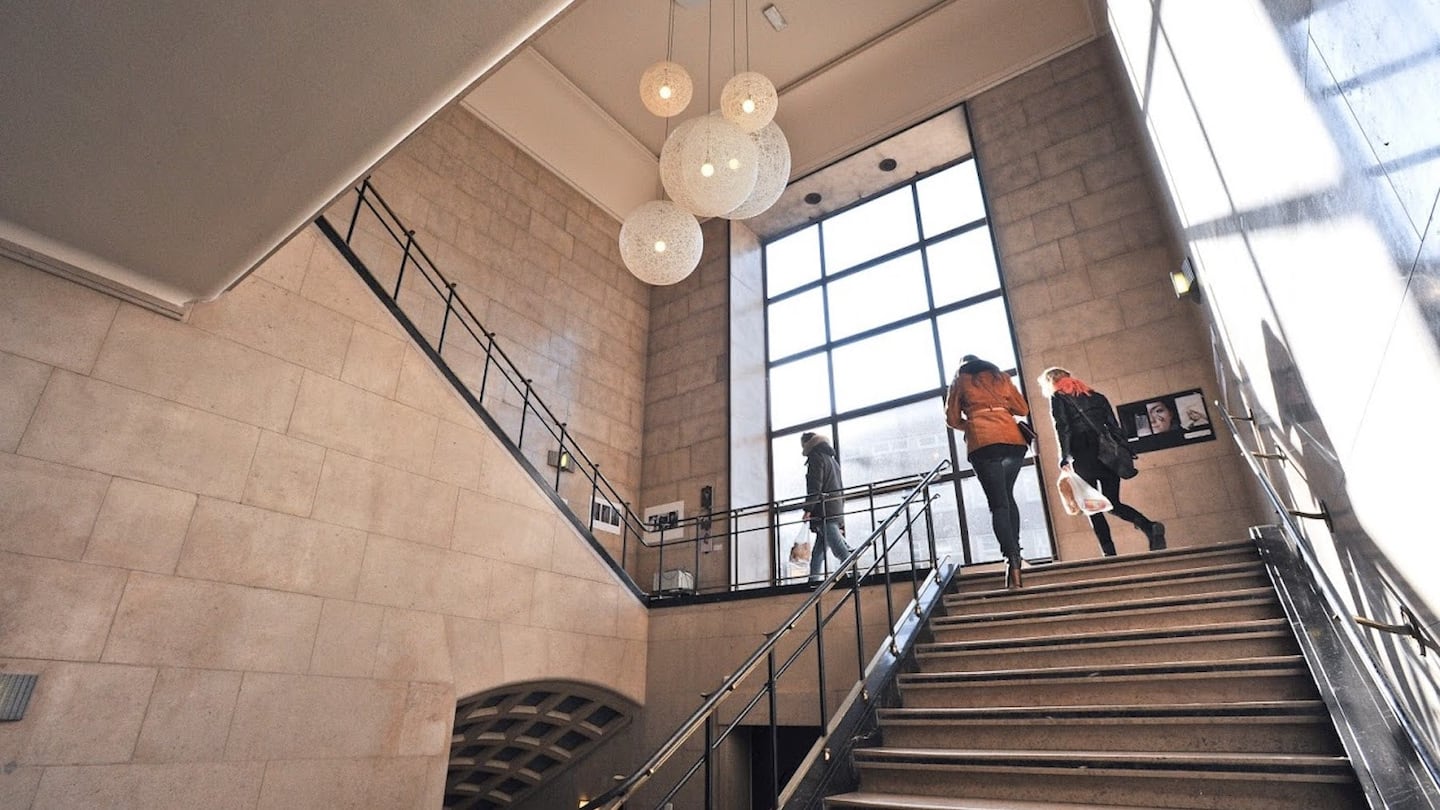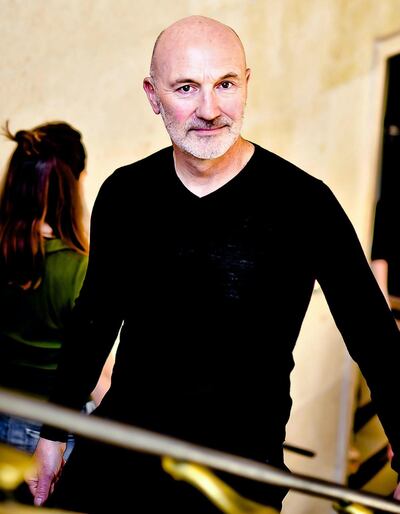
The Business of Fashion
Agenda-setting intelligence, analysis and advice for the global fashion community.

Agenda-setting intelligence, analysis and advice for the global fashion community.

AMSTERDAM, Netherlands — With Millennial and Gen-Z demands for sustainability and inclusivity beginning to impact almost every aspect of the industry, the Amsterdam Fashion Institute has reoriented its methods of education to reflect the preferences of the next generation of both designers and consumers.
With its new manifesto, designed to align the educational goals of its 1,200 students, AMFI wants to build an “environment of mutual respect and shared knowledge” able to create a “community of change-makers,” with sustainability and digital innovation sitting at the core of the curriculum.
As a part of Amsterdam University of Applied Science, which educates 50,000 students, AMFI champions interdisciplinary fashion education. The school places a strong emphasis on the collaborations between its undergraduate departments, Fashion and Design, Fashion and Management, Fashion and Branding, and the Masters in Fashion Enterprise Creation, to develop fully rounded fashion professionals. Additionally, AMFI's internship programme sends students to Adidas, Alexander McQueen, Louis Vuitton and Vogue, among other prestigious companies.

Leslie Holden, head of Fashion & Design and Fashion Enterprise Creation | Source: Courtesy
BoF sits down with Leslie Holden, the head of the BA Fashion and Design and MA in Fashion Enterprise Creation courses at AMFI, to hear more about how the largest fashion institute in the Netherlands is developing a curriculum for the future.
How would you describe the DNA of your school?
AMFI is a Dutch college with an international focus. We have around 1,200 students across three departments — Fashion and Design, Fashion and Management and Fashion and Branding — which cover the industry from concept through to consumer. However, while a student might enrol on one of the four-year bachelor’s degrees or the two-year MA in Fashion Enterprise Creation, all students are united by our manifesto, which encapsulates the essence of AMFI.
The first line on the manifesto is that we believe fashion is a force for good. Sustainability and well-being are at the core of what we’re doing, and what we aim to achieve, at AMFI. I believe that we can no longer justifiably educate young fashion professionals to propagate a business in what is reportedly the second biggest polluting industry in the world — education has to help shift the mindset.
Changing mindset requires a cultural shift, which cannot be done overnight. But fashion is in a state of flux and things are changing quickly. I believe that in 10 to 15 years’ time, the industry will have changed significantly due to the speed of technology, and fashion education will have to realign and refocus for this future. As a result, we must develop methods of education which are adaptable and open to new skills, new knowledge and new markets.
We then want to develop young fashion professionals today who can make the changes needed in this industry, which is an opinion not only held by the management team and other lecturers at AMFI, but also by the students, who are demanding a new vision on fashion education.
How does the curriculum reflect this new vision of fashion education?
We use a reality-based concept of learning, which means projects authentically reflect the industry and the needs of the market. Students then present their products to the wider industry.
For example, over the past 11 years, we have had our brand, “Individuals,” for which ten senior students from each department collaborate to design, brand and manufacture a collection each semester. Other examples include the videos produced by the Visual Culture students, which are premiered at Amsterdam Fashion Week, while our magazine students create a print and online magazine, which is distributed globally.
Innovation and technology are also key pillars for our curriculum, which we teach through our “Hypercraft” programme. In this course, students from all departments learn 3D visual prototyping and virtual reality. This enables further innovation through our interdisciplinary approach, allowing for cross-department, faculty and university collaborations.
How is sustainability built into AMFI’s courses?
While the AMFI curriculum has reflected sustainable practices for a long time, we have re-thought our approach in the last couple of years, actively developing a model of education with sustainability as a driver.
To start this process, we worked with a number of external partners who are experts in the field, such as the sustainable social enterprises, Circle Economy and Fashion for Good. We have also worked with our industry partners who are actively involved in working on a more sustainable approach, such as H&M and Tommy Hilfiger.
The first line on the manifesto is that fashion is a force for good. Sustainability and well-being are at the core of what we're doing.
Six years ago, we also started building the new two-year Masters course, Fashion Enterprise Creation, which is the first MA on circular fashion entrepreneurship. On a micro level, it is about educating people to start up and run their own sustainable fashion business. On a macro level, it’s about questioning and developing new and innovative business models for small and medium-sized enterprises in fashion.
For the past 12 years, we have also hosted an annual symposium on sustainability called Beyond Green, which is in collaboration with Circle Economy and the retail store Hema. The objective is to bring the industry and students together to work on sustainable challenges set by the industry. We also invite keynote speakers to inspire and to set the context of the theme.
How has AMFI evolved with its students?
We are student-centred — building an environment of mutual respect and shared knowledge, working with the students to build this education. Generation Z are quite different from Millennials and we have to react quickly to that.
We want to help students understand that failure is a good thing, that it is part of the learning process. But we also need to embrace that in the way we are grading projects and measuring achievements. We’re having workshops with our teams to change their feedback criteria, so that instead of saying, “this is wrong,” teachers instead say what they like about students’ work and what they would like to see more of — a more positive perspective.
We have to listen to what the students want and need, not base education on what we think because that’s the way we studied. A student should feel free enough, open enough and safe enough to be able to experiment. What we need now, more than any other time in fashion, is innovation. But if students don’t feel safe to fail, they are never going to innovate.
What kinds of students excel at your school?
Our students are passionate and committed, with the best students making the most of the technology we have in-house and extensive network of industry and education partners AMFI has. They are conceptual but market-aware and engaged with making a better world. We’re teaching them to be professionals and to understand the whole of the industry, not just focusing on one particular area within it.
How do you prepare students for employment at AMFI?
Employability is key and because our curriculum is focused on reality-based learning, our programmes are predominantly in collaboration with the industry, preparing our students for fashion workplaces. We work with companies in different capacities too, whether in brief setting or other forms of collaboration.
Internships are also obligatory at AMFI. Students in their third year will spend a semester interning, which is six months long. Our students have to decide where they want to go — we give advice, but we don’t place them anywhere. What’s more, if it’s a company we have never worked with, our head of internships will contact the company, visit them or Skype them, and explain what’s needed from an academic point of view.
There are many companies here in the Netherlands, including Iris van Herpen, Viktor & Rolf, Nike and PVH's Calvin Klein and Tommy Hilfiger. Our students intern with these brands but also go all over the world to companies across the spectrum of fashion, such as H&M, Hugo Boss, Alexander McQueen and Vivienne Westwood. These internships can also lead to employment once they have graduated.
From analysis of the global fashion and beauty industries to career and personal advice, BoF’s founder and CEO, Imran Amed, will be answering your questions on Sunday, February 18, 2024 during London Fashion Week.
The State of Fashion 2024 breaks down the 10 themes that will define the industry in the year ahead.
Imran Amed reviews the most important fashion stories of the year and shares his predictions on what this means for the industry in 2024.
After three days of inspiring talks, guests closed out BoF’s gathering for big thinkers with a black tie gala followed by an intimate performance from Rita Ora — guest starring Billy Porter.